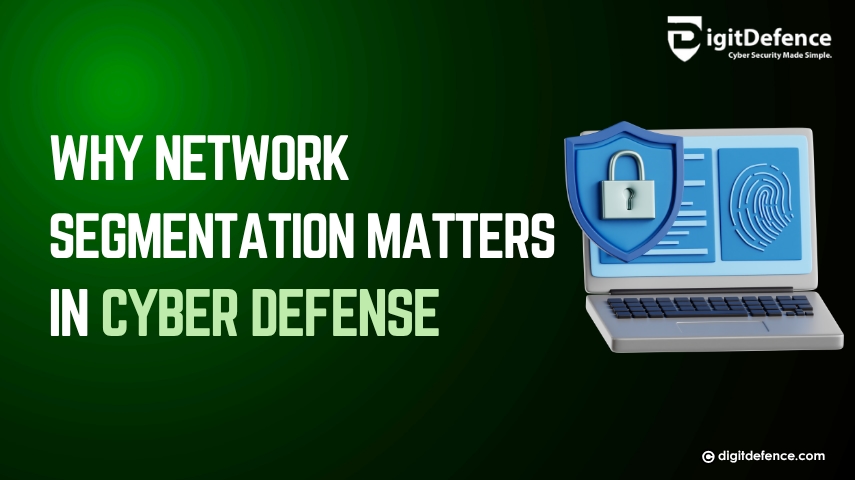
Think about it if a hacker gets into one part of your system, could they reach everything else too?
That’s the reality for many organizations today. One weak password, one misconfigured device can turn a small intrusion into a company-wide shutdown.
When your network has no walls, even a single breach can bring the entire system down, and once that happens, recovery isn’t just costly, it’s public.
That’s why the smartest companies are quietly adopting network segmentation before disaster forces their hand.
What Is Network Segmentation and Why It Matter
Network segmentation means breaking your network into smaller, independent zones that can be controlled and monitored separately.
Each section has its own access rules, security tools, and monitoring points, making it harder for threats to move freely once they get inside.
Role-Based Access Control
Not every user or application needs open access. Segmentation restricts permissions, ensuring that each user or system interacts only with the data necessary for their function.
The Rise of Microsegmentation
Modern networks extend across on-premises systems, clouds, and virtual workloads. Microsegmentation adds another layer of precision, isolating individual applications, virtual machines, and containers for deeper protection.
Why Network Segmentation Is Crucial for Cyber Defense
Stops Threats from Spreading
If one system is compromised, segmentation contains the damage and blocks lateral movement across the network.
Safeguards Critical Assets
High-value systems such as financial records or client databases remain separated from everyday traffic zones.
Improves Network Visibility
By monitoring traffic within and between segments, IT teams can detect unusual patterns faster and investigate targeted areas without disrupting the entire network.
Supports Compliance Standards
Many cybersecurity frameworks, including PCI-DSS, HIPAA, and ISO 27001, require strict data separation. Segmentation makes this both practical and sustainable.
Why a Flat Network Leaves Everything Exposed
One Breach, Total Access
Without segmentation, a single compromised device or stolen credential can unlock every part of your infrastructure.
Slower Containment During Attacks
When everything connects without isolation, locating and isolating infected systems takes longer, giving attackers more time to spread.
Hidden Internal Threats
Malware often hides inside trusted internal traffic, evading perimeter-based security tools.
Costly Compliance Failures
Flat networks frequently fail audit reviews because sensitive data isn’t properly separated from general systems, leading to penalties or failed certifications.
How Network Segmentation Builds Cyber Security
Makes Zero Trust Practical
Segmentation enforces the “never trust, always verify” approach by restricting movement and validating every connection request.
Enables Fine-Grained Access Control
Organizations can control who accesses which systems, under what conditions, and through what channels.
Simplifies Threat Detection
When network segments are smaller, anomalies stand out, making it easier to identify where an issue begins.
Reduce the Attack Surface
Dividing systems limits the number of available targets, reducing the opportunities attackers can exploit.
Speeds Up Recovery
When something does go wrong, segmented networks allow teams to isolate and restore affected zones quickly, minimizing downtime.
Step-by-Step Process for Effective Network Segmentation
Identify Critical Assets
Map where sensitive data and essential systems reside. Build protective zones around them.Classify Users and Devices
Group endpoints by department, role, or trust level to define appropriate access rights.Design Logical Segments
Use VLANs, subnets, and firewalls to divide your environment logically and efficiently.Set Access and Communication Rules
Specify which segments can communicate and what type of traffic is allowed.Continuously Monitor and Refine
Use network analytics to monitor segment activity and update rules as systems evolve.
Common Problems to Avoid in Network Segmentation
Over-Segmentation
Creating too many small zones can slow performance and make management complex.
Misaligned Security Policies
Policies should match real operational workflows, not just theoretical best practices.
Ignoring Cloud and Hybrid Networks
Segmentation must extend across on-prem, cloud, and virtual infrastructures to maintain consistent protection.
Limited Visibility Tools
Without ongoing monitoring, segmentation can hide issues instead of preventing them.
Why Businesses Trust DigitDefence
DigitDefence is one of the best Cybersecurity company that designs segmentation strategies that match each organization’s structure, risk level, and compliance requirements.
Services Include:
Network traffic mapping and segmentation planning
Zero Trust and microsegmentation frameworks
Firewall rule optimization and access policy setup
Continuous monitoring, tuning, and compliance reporting
By implementing segmentation with DigitDefence, businesses gain both flexibility and control, keeping operations secure without slowing performance.
In cybersecurity, prevention is vital, but containment is what keeps you running.
Network segmentation ensures that when something breaks, it breaks in one place, not everywhere. It limits exposure, speeds recovery, and turns chaos into control.
The question isn’t if an attack will happen, it’s how far it can spread.
Segmentation decides that answer.
FOR SERVICES
EMAIL: [email protected]
PHONE: +91 7996969994
